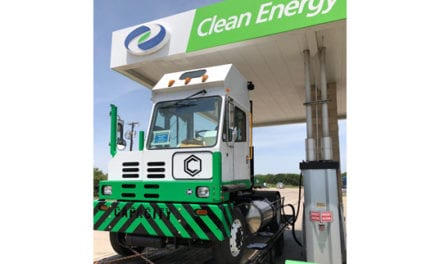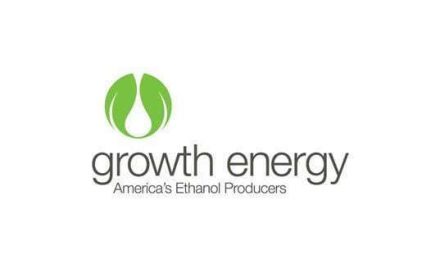Oil Market Action Coming Back to “Normal”
- Product demand stabilizes around 20 million barrels daily in 2016
- Propane expands its share of demand
- Product exports now greater than four million barrels per day
- Natural gas futures price curve turning bullish.
Sincerely, Alan Levine, Chairman of Powerhouse

The Matrix
The year 2016 presented a study in contrasts for the petroleum industry. Fundamental elements that had been wildly out of sync are now returning to more normal ranges.
Changes in the political situation could influence corporate decisions on capital spending for exploration, drilling or product distribution. Nonetheless, market fundamentals will ultimately determine demand and availability through the mechanism of price.
Demand for petroleum products hovered around 20 million barrels daily in 2016. There were few significant changes among the mix of products supplied in 2016. Gasoline continues to dominate, accounting for 46% of total demand. Distillate fuel oil remains in second position, slightly below 20% of total consumption.
One notable change has been the emergence of propane in the demand mix. This product is now 5.6% of the total. Use grew 3.6% during the year. The effect of this gain can be seen in a sharp drop in inventories. Stocks have fallen 16% since the end of September.

In part, the drop in propane stocks reflects a sharp increase in exports. The four-week average export of propane was at 560,000 barrels daily in September. Propane outflows reached 946,000 barrels daily, an increase of nearly 43% in only fourteen weeks.

The locus of crude oil supply shifted slightly during 2016. Domestic production continued to fall from 2015, in all averaging 8.8 million barrels daily, down 6.9%. By mid-year, however, output started to rise from a low of 8.4 million barrels daily.
International trade figured into the domestic balance. Net crude oil imports are an important element in U.S. supply. In 2016, they approached 8 million barrels daily, a year-on-year gain of 7.7%. A modest but growing share of foreign oil trade was the gain in product exports. They exceeded 4 million barrels daily, an annual gain of 10.1%.
Supply/Demand Balances
Supply/demand data in the United States for the week ending December 23, 2016, were released by the Energy Information Administration (EIA).
Total commercial stocks of petroleum decreased 12.9 million barrels during the week ending December 23, 2016.
Decreases were reported in stocks of gasoline, fuel ethanol, K-jet fuel, distillates, propane and other oils. A build was reported in stocks of residual fuel oil.
Commercial crude oil supplies in the United States rose to 486.1 million barrels, an increase of 0.6 million barrels.
Crude oil supplies decreased in three of the five PAD Districts. PADD 1 (East Coast) crude oil stocks fell 1.0 million barrels, PADD 4 (Rockies) stocks declined 0.5 million barrels and PADD 5 (West Coast) stocks retreated 1.1 million barrels. PADD 2 (Midwest) stocks increased 1.4 million barrels and PADD 3 (Gulf Coast) crude oil stocks grew 1.9 million barrels.
Cushing, Oklahoma, inventories increased 0.1 million barrels from the previous report week to 66.4 million barrels.
Domestic crude oil production decreased 20,000 barrels daily to 8.766 million barrels per day.
Crude oil imports averaged 8.167 million barrels per day, a daily decrease of 304,000 barrels. Exports rose 70,000 barrels daily to 627,000 barrels per day.
Refineries used 91% of capacity, a decrease of 0.5 percentage points from the previous report week.
Crude oil inputs to refineries decreased 101,000 barrels daily. There were 16.557 million barrels per day of crude oil run to facilities. Gross inputs, which include blending stocks, fell 96,000 barrels daily to 16.796 million barrels daily.
Total petroleum product inventories saw a decrease of 13.5 million barrels from the previous report week.
Gasoline stocks fell 1.6 million barrels. Total stocks are 227.1 million barrels.
Demand for gasoline increased 9,000 barrels per day to 9.278 million barrels daily.
Total product demand decreased 1.250 million barrels daily to 20.159 million barrels per day.
Distillate fuel oil supply decreased 1.9 million barrels; total stocks are 151.6 million barrels. National distillate demand was reported at 3.967 million barrels per day during the report week. This was a weekly decrease of 582,000 barrels daily.
Propane stocks fell 5.7 million barrels to 86.9 million barrels. Current demand is estimated at 1.360 million barrels per day, a decrease of 93,000 barrels daily from the previous report week.
Natural Gas
According to the EIA:
Working gas in storage was 3,360 Bcf as of Friday, December 23, 2016, according to EIA estimates. This represents a net decline of 237 Bcf from the previous week. Stocks were 413 Bcf less than last year at this time and 79 Bcf below the five-year average of 3,439 Bcf. At 3,360 Bcf, total working gas is within the five-year historical range.
The futures price curve for natural gas has taken on a bullish shape as current prices have rallied. More distant years’ prices are lower than current years, creating backwardation. The December natural gas settlement for 2017 was $3.714. Subsequent years settled lower: 2018 at $3.085 and 2019 at $2.99.
Analysts are suggesting the decline in the curve reflects hedging by producers in future years. Moreover, heightened efficiency in wind generation may have encouraged hedging in that sector as well.
Futures trading involves significant risk and is not suitable for everyone. Transactions in securities futures, commodity and index futures and options on future markets carry a high degree of risk. The amount of initial margin is small relative to the value of the futures contract, meaning that transactions are heavily “leveraged.” A relatively small market movement will have a proportionately larger impact on the funds you have deposited or will have to deposit: this may work against you as well as for you. You may sustain a total loss of initial margin funds and any additional funds deposited with the clearing firm to maintain your position. If the market moves against your position or margin levels are increased, you may be called upon to pay substantial additional funds on short notice to maintain your position. If you fail to comply with a request for additional funds within the time prescribed, your position may be liquidated at a loss and you will be liable for any resulting deficit. Past performance may not be indicative of future results. This is not an offer to invest in any investment program.
Powerhouse is a registered affiliate of Coquest, Inc.
Was this helpful? We’d like your feedback.
Please respond to [email protected].
Copyright © 2017 Powerhouse, All rights reserved.










